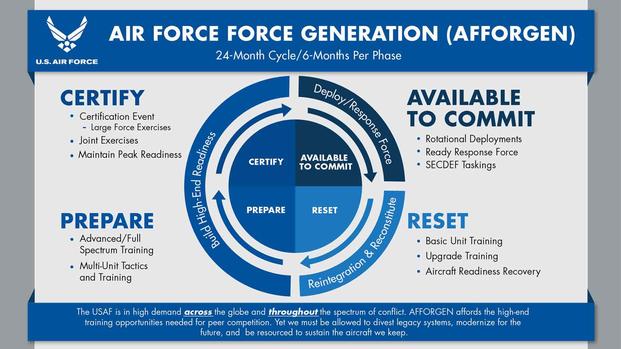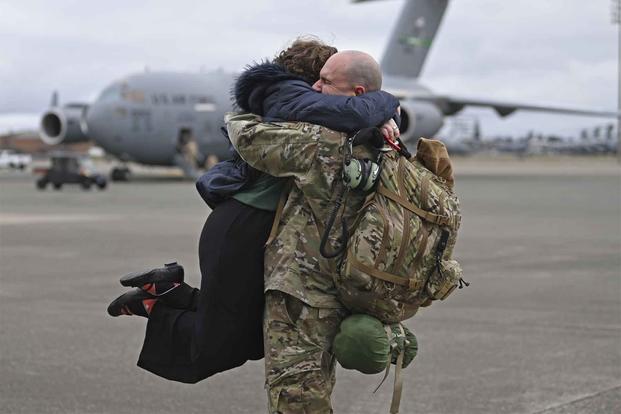Air Force officials are changing the way the service deploys airmen, offering more time at home after a tour and more training by sending units on long-term assignments instead of individual deployments.
It's the most substantial change to Air Force deployments in two decades, the service said in a press release Tuesday evening. Dubbed the "Air Force Force Generation model," the new deployment cycle will apply to all airmen by Oct. 1.
"While today's Airmen are used to operating from main operating bases in uncontested environments, future conflicts will present radically different challenges that make this hard-earned experience less applicable," the Air Force said in the press release.
Under the new model, airmen will have 18 months between six-month deployments allowing for more "focused time for individual and unit training and certification," according to the service. Groups of airmen set to deploy will get the chance to work and train together for several months prior to shipping out, unlike under existing policy.
The new model will be a 24-month rotational cycle broken into four six-month phases -- Prepare, Certify, Available and Reset -- the service said.

For decades, the Air Force has had airmen deploy for around at least six months, followed by around 12 or so months back at their home base. That rotation relied on bringing airmen from various installations across the country together for deployments, and forced them to cram in pre-deployment training and classes in a shorter period of time.
Air Force officials have talked publicly in recent years about their desire to change the old cycle, most recently at the Air and Space Forces Association's conference this past March in Colorado.
"We have been able to get away with taking three Airmen from this base, five Airmen from this base and two Airmen from that base, deploying them and expecting them to come together on Day 1 and be a team," Lt. Gen. James Slife, headquarters Air Force deputy chief of staff for operations, said during a March 8 panel at the Air Warfare Symposium. "We don't actually think that's the way the future operating environment is going to permit us to operate."
The first phase of the new plan, prepare, involves advanced and multi-unit training exercises for six months. The second phase, certify, involves major joint exercises and certification events with a focus on maintaining peak readiness. The third phase, available to commit, is the six-month rotational deployment or Pentagon assignment. The fourth phase, reset, is where units return back to base for routine training, leave, time with families and aircraft readiness recovery.
Air Force Chief of Staff Gen. CQ Brown Jr., who has been nominated as the next chairman of the joint chiefs, has supported the change in the deployment cycle for several years and said in a 2022 speech at the Air Force Association's conference that changing it was crucial to the service's identity.
"We need an approach that serves our national security and defense strategies, our joint warfighting concept and recognizes the changing threats and tendencies in the character of warfare," Brown said during his speech. "Adoption is making the concepts part of our DNA, part of our culture."
The Air Force has already been testing out the model. This past April, airmen with the 62d Airlift Wing returned from a deployment under the new cycle and were assisting with U.S. Central Command, U.S. European Command and U.S. Africa Command operations, according to the service.
-- Thomas Novelly can be reached at thomas.novelly@military.com. Follow him on Twitter @TomNovelly.
Related: Air Force Ends BEAST Week Mock Deployment at Boot Camp














